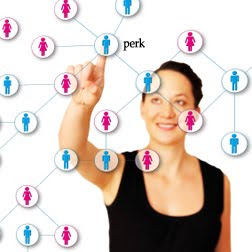 You've all read about all the gimmicks. Heard all the pitches. And taken in the all the analysis.
You've all read about all the gimmicks. Heard all the pitches. And taken in the all the analysis. Almost everyone points to the same conclusion. If you want to succeed in social media, you need to find influencers. Right?
WRONG.
Most experts, agencies, and scoring systems aren't leading companies to influencers. They are leading companies to people who are among the most influenced. Sure, this might not be true in every case, but it does apply to a growing collective.
How commoditizing influence turns influencers into influencees.
• Influenced by cash. Many influencers will spread a message for cash. The rates varies, ranging from a blogger who might drop in a link for $25 per insertion to celebrities asking almost $3,000 per tweet.
• Influenced by perks. If you can convince someone to write something positive about your product or service for nothing more than perks, it speaks volumes about how easily they are prone to be influenced. In some cases, a mere coupon for a cup of java could do it.
• Influenced by information. Those pursuing some semblance of a thought leader moniker need the inside scoop to create an illusion of thought leadership without original thoughts. Designating them as the first string of PR-friendly reviewers with every product launch will lift them up.
• Influenced by attention. Since social media places a premium on affiliation, the simple process of sharing their opinions, insights, and flatteries could influence future coverage. Reciprocating with even a few mentions and re-tweets pays dividends.
• Influenced by comments. While some of the top influencers don't respond to every comment, many respond as quickly as possible because comments are still considered important. So who yields influence: the commenter with a two-second quip or the author dropping everything to pander to the commenter?
• Influenced by scores. it seems almost sad that some individuals are so influenced by algorithms, they will change their behavior to accommodate. Even one of these companies recently expressed the danger in overemphasizing such scoring systems.
• Influenced by influencers. As social media developed a hierarchy of influence, it also developed bubbles, which Umair Haque recently called relationship inflation. Like soap bubbles, niche influencers tend to gravitate toward each other, stick together, and prop each other up (regardless of merit) by trading influence.
• Influenced by criticism. Much like brands, influencers tend to be hypersensitive to criticism. Some so much so that no one even knows where the criticism originated before it is responded to with the force of countless minions.
Companies aren't chasing influencers. They are chasing influencees.
When you take the time to think about it, companies don't seem as interested in influencers as much as the potential to influence. And the agencies, experts, and analytic tool specialists point toward influencers as the answer to everything, they seem to be advocating the exploitation of people who are temporarily popular. This tactic is a descent into propaganda.
 If you really want to distinguish true influencers from the rest, they are generally people who are unencumbered by the banner of influence currently embraced by social media. They tend to focus on something else in entirety, such as imagination, creativity, innovation, and truth.
If you really want to distinguish true influencers from the rest, they are generally people who are unencumbered by the banner of influence currently embraced by social media. They tend to focus on something else in entirety, such as imagination, creativity, innovation, and truth.You can't buy their love. You can't ingratiate them with praise. You can't inflate their egos. They don't care what you think.
True influencers are innovators, often (but not always) without mass followings of people until the innovation is proven. You know their names. They include people like Steve Jobs, Kurt Cobain, Paul Gauguin, Martin Luther King Jr., Leonardo da Vinci. Alfred Hitchcock, Galileo Galilei, Confucius, etc.
There are thousands of them. But even so, they share some similarities. Generally, while influenced by other individuals (some obscure and some well known) and experiences, the greater weight of influence in their lives came from the ideas that preceded them, eventually leading them to ideas and innovations that transcended their existence.
Innovation alone leads to tangible influence.
Sure, there is something to be said for popularity, persuasiveness, and punditry. Those mechanisms can help a good idea or innovation spread faster than those that never make it to a drafting table. But social media would be remiss to continually place more emphasis on the mechanism of attention — employing propaganda to persuade people that unoriginal, biased, bought, stolen, or otherwise fictional and inflated ideas — than the innovations themselves.
Bad ideas, after all, can be spread just as fast as good ones. We've known this since the dawn of time. And for every advent in communication, there is always an equally powerful mechanism for information manipulation that follows.
The growing evidence seems to suggest that the "influencers model" is a mechanism for information manipulation that follows the merit of social media. Special thanks to Geoff Livingston, Olivier Blanchard, and a few other punks for the conversation.

























